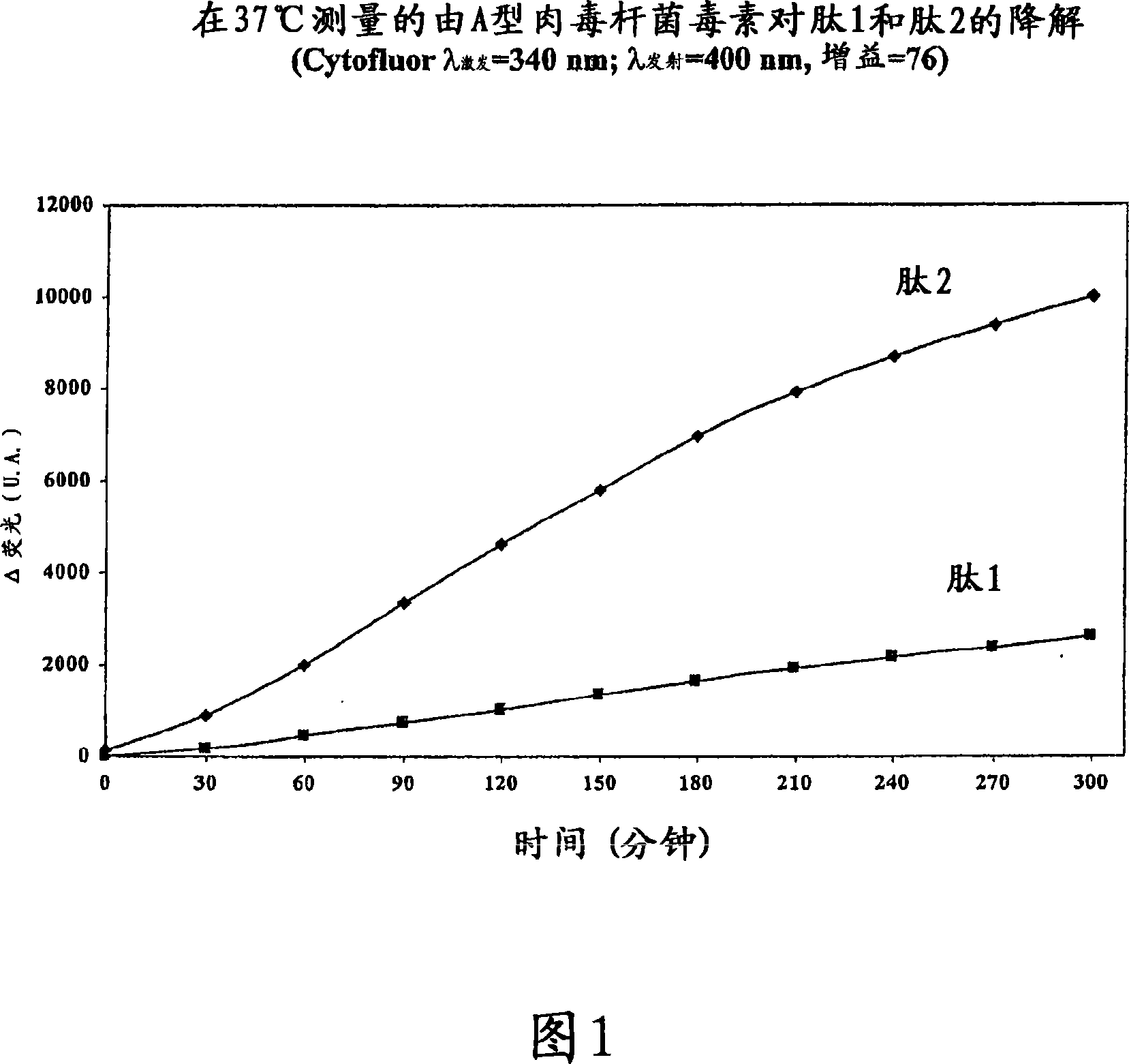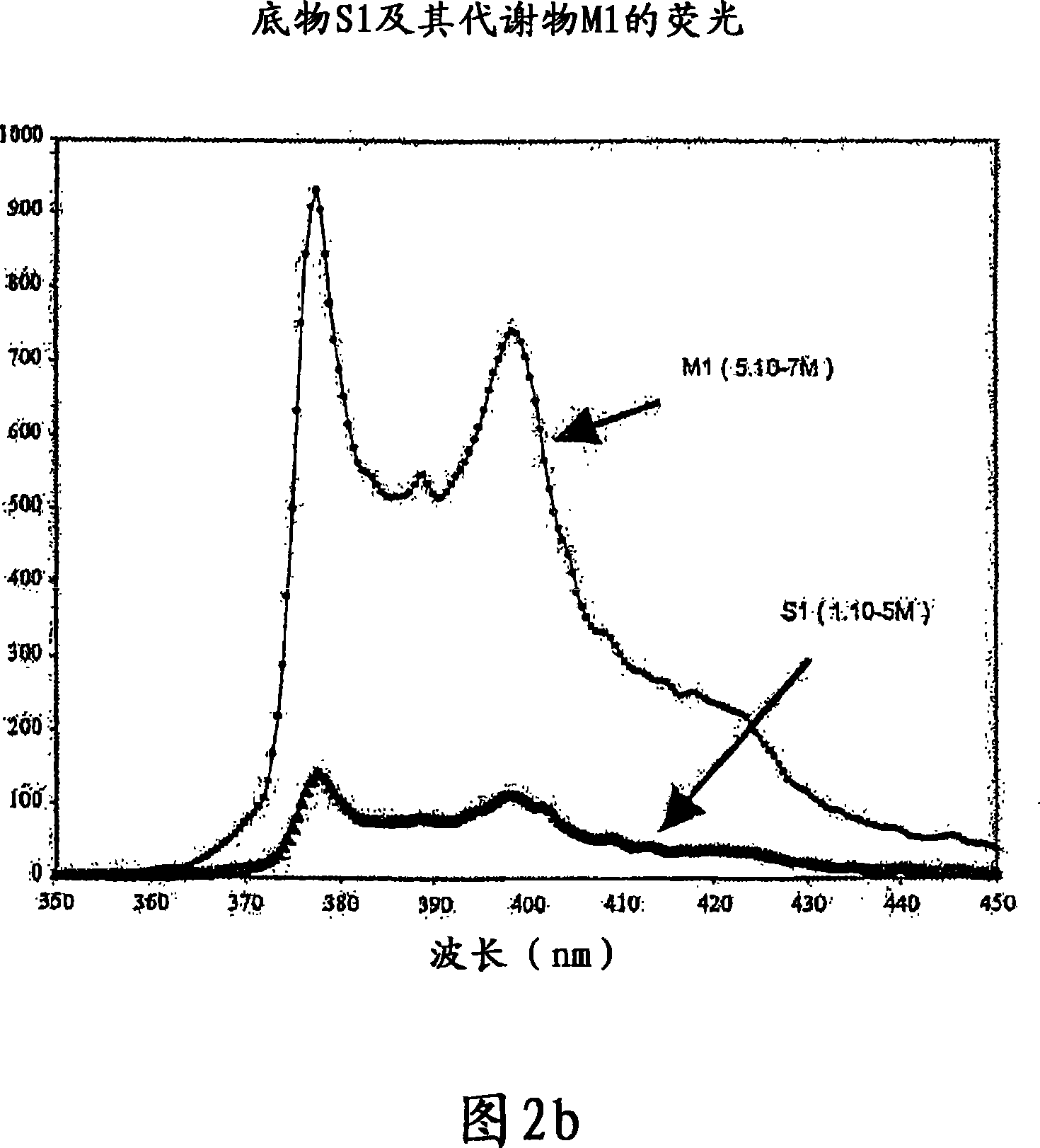Peptide substrates recognisable by a botulinum toxin A, BoNT/A and the use thereof
A technology for botulinum toxin and peptide substrates, which is applied in the fields of peptides, desipeptides, fluorescence/phosphorescence, etc., which can solve the problems of time-consuming and expensive and not evaluating the biological activity of therapeutic toxin preparations
- Summary
- Abstract
- Description
- Claims
- Application Information
AI Technical Summary
Problems solved by technology
Method used
Image
Examples
Embodiment Construction
[0159] 1) Synthesis of peptides
[0160]The desired compound can be obtained by the usual solid-phase synthesis method on an automated synthesizer such as Applied Biosystem's Apparatus 431A according to the method of Merrifield. The chemistry used corresponds to the Fmoc technique. Side chain deprotection and cleavage of peptidyl resins by trichloroacetic acid, as described by E. Atherton and R.C. Sheppard (1989) in "Solid phase peptides synthesis: a practical approach", IRL Press , Oxford). The coupling is carried out according to conventional techniques, using coupling agents such as HATU, Bop, PyBrop, and preferably dicyclohexylcarbodiimide in the presence of hydroxybenzotriazole (HOBT) ( DCC). The details of the technology used can be found in the publications reporting the synthesis of very large peptides carried out by the inventors (Cornille F. et al., J.Pept.Res., 1999, 54, 427-435; Cornille F. et al. , Nucleic Ac.Res., 1998, 26, 2143-2149; Cornille F. et al., Int.J....
PUM
 Login to View More
Login to View More Abstract
Description
Claims
Application Information
 Login to View More
Login to View More - R&D
- Intellectual Property
- Life Sciences
- Materials
- Tech Scout
- Unparalleled Data Quality
- Higher Quality Content
- 60% Fewer Hallucinations
Browse by: Latest US Patents, China's latest patents, Technical Efficacy Thesaurus, Application Domain, Technology Topic, Popular Technical Reports.
© 2025 PatSnap. All rights reserved.Legal|Privacy policy|Modern Slavery Act Transparency Statement|Sitemap|About US| Contact US: help@patsnap.com



